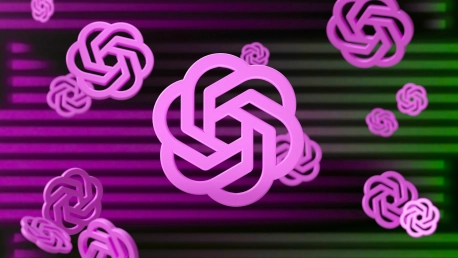The rise of AI has been a game-changer across various sectors, including UI/UX design, where it has led to a surge in both efficiency and creativity. Tools like ChatGPT exemplify AI’s profound impact, influencing design from the initial concept to the finished product. These AI-driven technologies are more than innovative features; they’re reshaping the future of design by enhancing workflows and encouraging fresh perspectives. AI’s integration into the design process signals a shift from traditional methods to more sophisticated, seamless operations that offer designers novel approaches and problem-solving techniques. This transition not only improves productivity but also fuels the potential for groundbreaking design solutions. As such, AI’s role in UI/UX design is invaluable, marking a forward leap for the industry that promises to continuously evolve and redefine the standards of design excellence.
The Integration of AI in UI/UX Design
At the embryonic stages of the design process, AI’s influence is already discernible. AI-powered tools effortlessly generate novel ideas and breathe life into creative concepts, countering the often daunting blank canvas that designers face. ChatGPT specifically serves as a springboard for generating design ideas, sparing professionals from the paralysis of initial creation. Furthermore, the precise elicitation of project requirements is elevated with AI’s capacity to parse complex briefs, offering a refined starting point for the design strategy that aligns with client needs and user expectations.Building upon this foundation, AI’s meticulous processing transforms the intricate web of user needs and business goals into actionable design strategies. ChatGPT, by interpreting nuanced user inputs, distinguishes itself as an indispensable ally for designers, allowing them to synthesize coherent roadmaps for UI/UX projects. This systematic approach not only streamlines the inception stage but ensures a robust path forward, anchored in data and articulated with the clarity that AI provides.
Enhancing the Creative Process
AI’s prowess advances into the realm of creative execution, enabling an array of design options to be conjured rapidly. Designers harness AI’s computational strength to iterate on visual elements at a pace unobtainable manually, thus accelerating the iterative process. The specter of competitive analysis, a traditionally labor-intensive task, is also abated as AI sifts through competitors’ designs, extracting insights that inform and refine the creative output. These glimpses of AI in action exemplify the transformative impact on the creative dimension of design, where inspiration is quantified and aesthetic variety is amplified at an unprecedented scale.The boon of swift design ideation is underscored by the democratization of creativity that AI introduces. With designers freed from the monotonous aspects of creating multiple variants, professionalism and particularity can flourish. AI acts as an extension of the designer’s mind, proffering an innumerable set of potential directions which can be narrowed down to the quintessential choice that resonates with the intended audience, ensuring that the design is not only functional but also holds the subtlety of human touch.
Automation in Design Prototyping
When conceptual designs near the phase of tangibility, AI’s role in forming high-fidelity mockups and prototypes becomes evident. The automation of repetitive tasks streamlines the prototyping process, allowing designers to allocate attention to the layers of complexity intrinsic to excellent app design. This transition from manual to automated practices in prototyping equips designers with the freedom to experiment and polish the user experience without the looming pressure of time-consuming tasks that can be mechanized.This pivot toward automation heralds a new era where focus is redirected to the narrative the design conveys and the experience it encapsulates. Prototypes, once a resource-heavy milestone in the design journey, are now swiftly produced, enabling iterative testing and refinement to achieve intuitive and compelling user interfaces. The automation that AI imparts extrapolates the boundaries of what can be achieved in the prototyping arena, permitting design expressions to be realized and evaluated with unparalleled efficiency.
Streamlining User Research and Data Analysis
The efficacy of a design is ultimately measured by its resonance with users, an aspect where AI’s analytical capabilities shine. AI tools adeptly translate raw user data into actionable insights, identifying trends and patterns that guide the crafting of user experiences. This deep dive into analytics shortens the path to a design that is not only visually appealing but also tailored to the user’s subconscious preferences and behaviors.These acute data-driven explorations elevate the specificity of user experience. The deliberate sifting through feedback and behavior metrics by AI tools like ChatGPT ensures that design decisions are substantiated with empirical evidence, reducing guesswork. The refinement of user experiences thus becomes a purposeful endeavor, sculpting interfaces that speak directly to the user’s needs and desires, leading to a deeper connection between the user and the product.
The Influence on Content Creation and Documentation
In the meticulous world of design, content and documentation carry critical importance. AI steps in as a powerful ally, streamlining content creation within design interfaces, from crafting compelling UI copy to generating thorough help documentation. This aspect of AI minimizes the tedium involved in content production and sets a consistent tone that aligns with the design’s overarching narrative.The role of AI stretches to the meticulous task of maintaining design system documentation. With the assistance of AI, designers are able to keep comprehensive records that ensure cohesive user experiences across various platforms. The meticulous attention AI tools can apply to maintaining up-to-date design systems is invaluable, ensuring a consistent vision despite the evolving nature of digital projects. This harmonization, powered by AI, solidifies the collective understanding and sustains the quality of the design ecosystem.
Simplifying Technical Communication
Collaborative efforts in design are often hampered by the complexity of technical jargon, a challenge readily met by AI applications. ChatGPT excels in breaking down intricate concepts, fostering a shared language among team members. The elimination of communication barriers via AI aids in converging various expertise toward a common goal, enhancing the efficiency and synergy of multidisciplinary project teams.The simplicity in communication championed by AI not only smooths the interaction within the team but also extends beyond, creating transparency for stakeholders less familiar with design terminologies. By translating these notions into an accessible vernacular, AI ensures that everyone involved, from developers to clients, is attuned to the design’s purpose and trajectory, fostering greater cohesion and mutual understanding throughout the design process.
Future of UI/UX Design with AI
AI’s amalgamation into UI/UX design is no longer a speculative choice but a compelling imperative for those seeking to distinguish themselves in a competitive field. The adoption of AI within design not only refines existing practices but also hints at a future where the creativity and intuition of designers are augmented by the precision and speed of artificial agents. It is the synergy between the algorithmic prowess of AI and the nuanced creativity of human designers that promises a new frontier for UI/UX design.Crucially, as much as AI reshapes workflows and amplifies capabilities, it does not usurp the irreplaceable facets of empathy and ingenuity that designers impart. The integration of AI technologies like ChatGPT is not about the displacement of human creativity but about its enhancement. Thus, the essence of great design continues to hinge on the human touch—adeptly supported by AI—to craft solutions that echo with users on a profound level. This symbiosis assures that the UI/UX field will evolve into an arena where technology boosts human potential, leading to unprecedented innovation and personalized user experiences.









